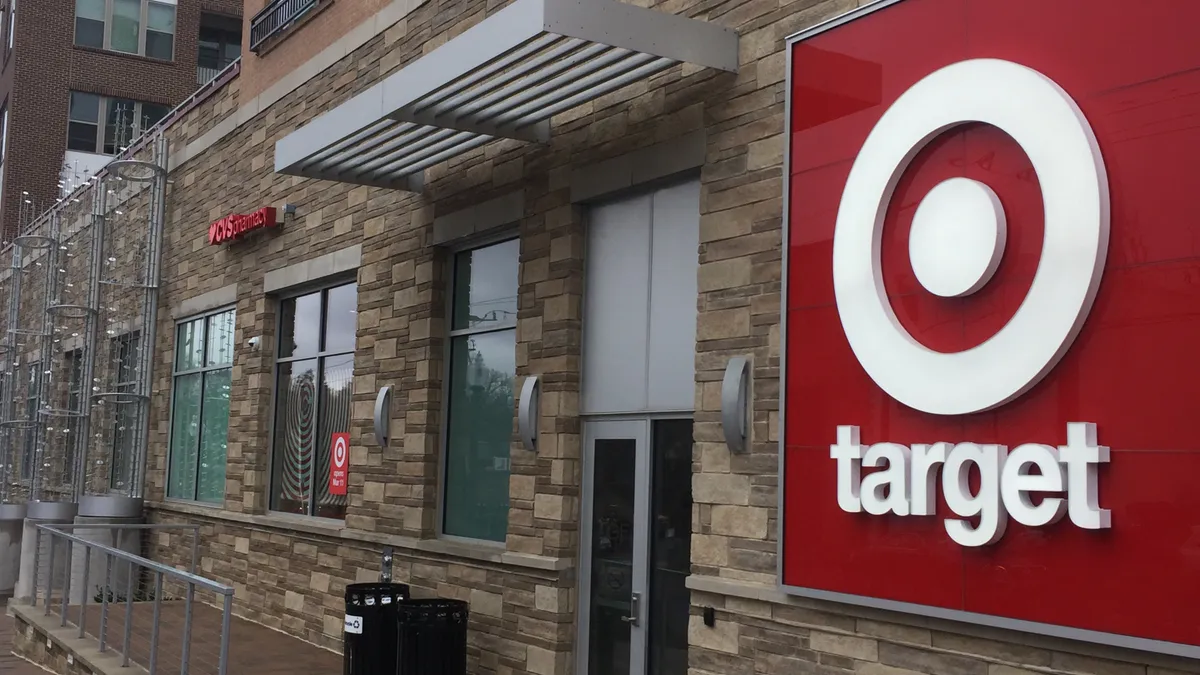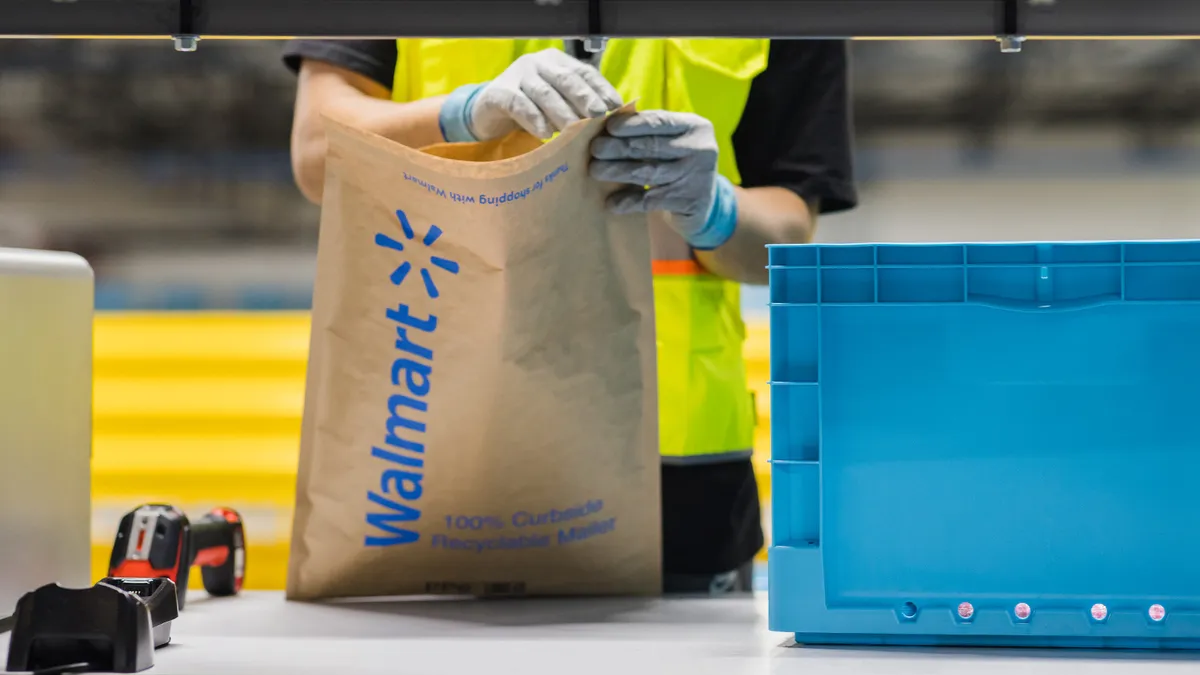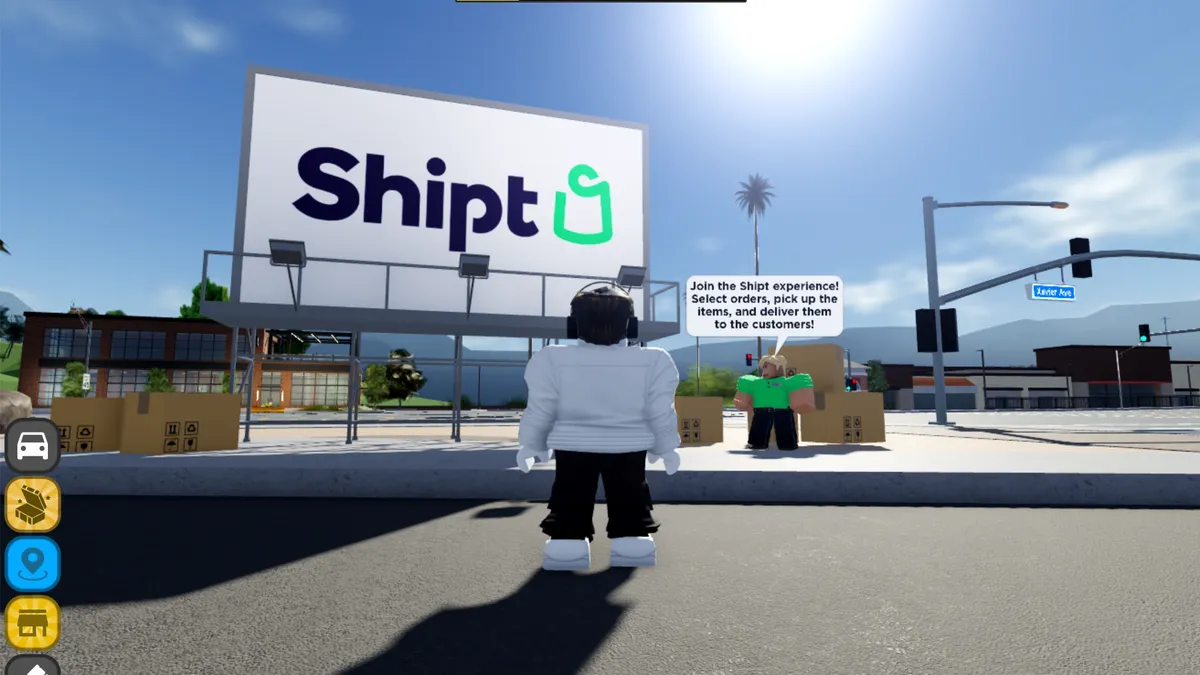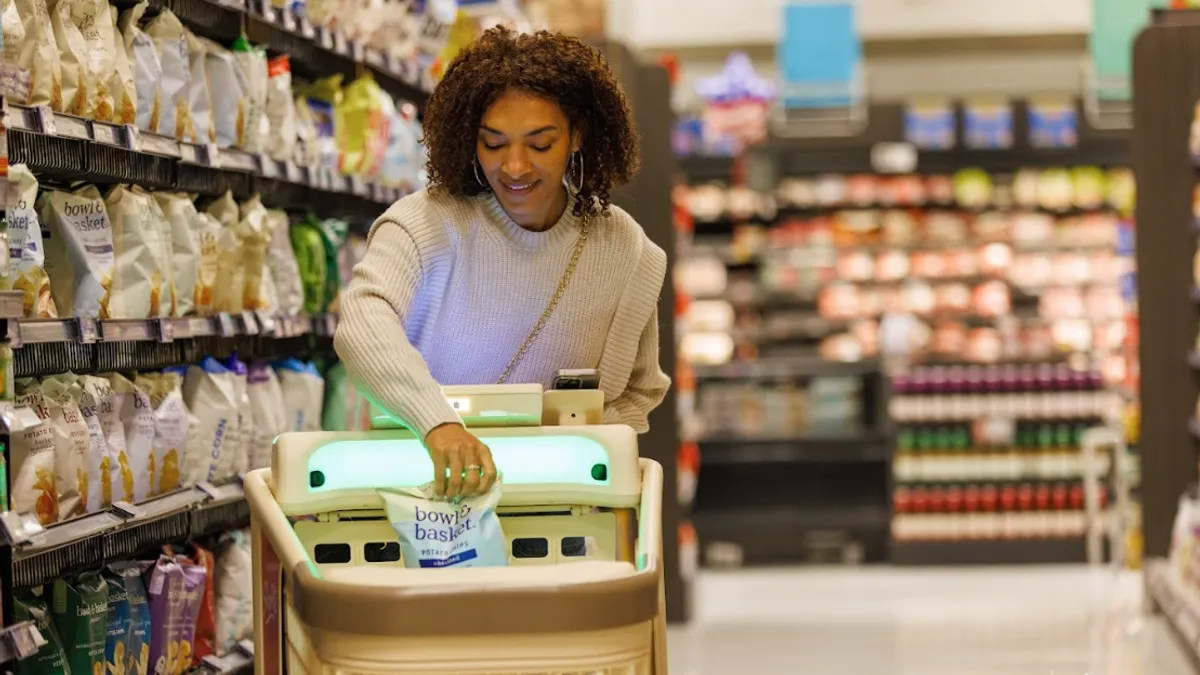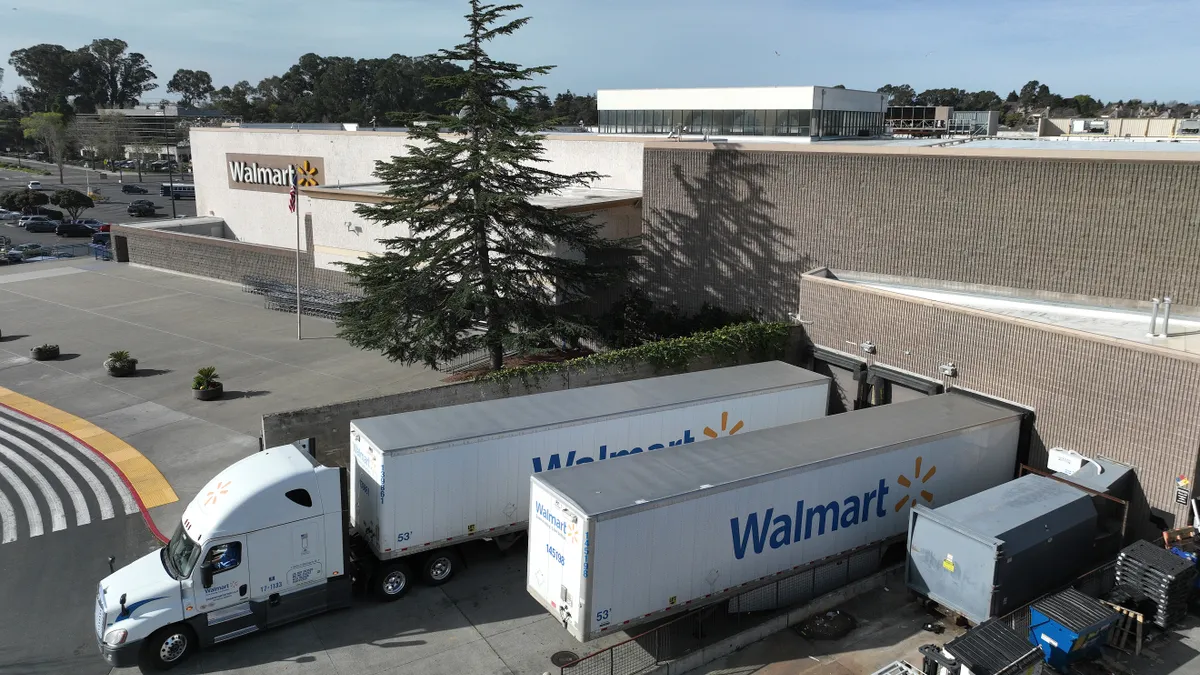Target's new facility in Perth Amboy, New Jersey, equips the company to achieve 40% fewer out-of-stocks than before. A remodeled store, the chain says, will bring in 2% to 4% more sales soon after it reopens. A decision to move to free two-day shipping, COO John Mulligan said in an earnings call, was an unequivocal success, bringing "an immediate increase in [the] number of orders, basket size, units and sales."
These three big wins were headline news after a first quarter earnings call featuring the strongest traffic growth in more than 10 years, by CEO Brian Cornell's count.
But behind the headlines lies a strategy that ties all the wins together. Many of the results, according to the earnings call, were a consequence of a commitment to move product to and from stores faster than ever before.
New distribution centers, remodeled backrooms at stores and a revamped delivery-fee structure are but a tip of the $7 billion iceberg that makes up Target's supply chain strategy for the next three years. A strategy which may be best described in one word: modernization.
"When you think about the work we're doing across the operations team, you quickly see that it's all about modernizing how we work, both our operating model and how we use our physical assets," Mulligan said to investors.
A shift from the retail world of old
Target's journey, as Mulligan describes it, is not unlike many other retailers' experiences.
"We started with a strong base of well-designed, well-located, and well-maintained stores and distribution facilities," he said, "but they are only optimized for store shopping."
If the recent wave of debt-driven bankruptcies and hundreds of closing stores nationwide indicated anything, it was that supply chains optimized to operate in that store shopping only world may not be best-suited for commerce today.
"Target wants to be at the forefront of that revolution, so we're thinking about our stores as hubs," Preston Mosier, Target's senior vice president of global supply chain & logistics field operations, said at the D3 Retail Supply Chain Summit in New York.
With small changes, Target scores big wins
| Change | Effect |
|---|---|
| 56 store remodels in Q1 | 2% to 4% sales lift after a store remodel; 100 more stores scheduled for remodeling in Q2 |
| Flow Center automation | Ability to customize shipments to individual stores, reducing store labor without need for more square footage in upstream facilities |
| New inventory logic | Out of stocks 40% lower than previous benchmark |
| Free two-day shipping | Immediate increase in number of orders, basket sizes, unites and sales |
| Stores as fulfillment hubs | Stores fulfilled more than two-thirds of digital volume in Q1 |
SOURCE: Target Q1 2018 Earnings Call Transcript, Seeking Alpha
In fact, Target is beginning to see its stores as part of a fulfillment network that spans over 1,800 facilities. It created a "flow center" last year in New Jersey, that can service both e-commerce and store needs. With more than 75% of the U.S. population living within 10 miles of a Target store, stores can be "way faster than a fulfillment center," Mosier said.
As a result, Target is approaching 2018 with an ambitious plan that starts in the backroom, Deborah Weinswig, founder and CEO of Coresight Research (formerly Fung Global Retail & Technology), a retail think tank, told Retail Dive's sister publication, Supply Chain Dive, via email.
"Target has allocated capital expenditure of more than $7 billion over the next three years to focus on technology and its supply chain," said Weinswig. "It plans to build a smart network that leverages all its stores and distribution assets to serve customers more quickly and more flexibly in every channel."
Data: Target's secret weapon
"Across our supply chain, we're testing and rolling out new processes designed to make us faster, more nimble, more accurate, and reliable," said Mulligan.
The Perth Amboy facility is but one example of a successful test of new technology. In addition to the new warehouse design and automation technology deployed within it, it was Target's deployment of a "new inventory positioning logic" developed in-house that allowed the retailer to increase fulfillment velocity.
Now that it has been tested and proven successful — thanks to an out-of-stock rate 40% below the previous benchmark — Target plans to deploy the logic to service 50 more stores by early next year.
"Last year was about developing and testing these algorithms," Mulligan said. "This year is focused on beginning to scale up the physical movement of inventory."
It's all about modernizing how we work, both our operating model and how we use our physical assets.

John Mulligan
COO, Target
The new algorithm speaks to the power of technology in retail's modernization.
Over the past year, Target has invested heavily not just in automation equipment, but also in how its labor force must change to adapt to new trends. For that reason, Mulligan said, Target created a new inventory management role within the supply chain team, "focused entirely on item forecast accuracy and allocation."
The new position has had tremendous strategic effects, he said. With the new position in store, the supply chain team has improved its focus on upstream inventory ability, enhanced safety stock for faster replenishment and helped the merchandising team focus purchase orders on strategic inventory, based on accelerating sales.
From corporate desk to store floor
The combination of improved algorithms and strategic focus are bleeding down to the store level, too, where associates can spend less time unloading or replenishing, due to more precise stock.
It also helps Target's delivery goals, according to Weinswig.
"By digitalizing the supply chain, Target can gain insight into the potential operational challenges and determine appropriate pricing and delivery windows based on consumers' preferences," she said.
Now, Target can claim a multi-tier delivery model, with direct-to-consumer services tailored at the store level. The retailer has experimented with drive-up services, where customers can get orders placed online delivered to the backseat of their vehicle within an hour. It also boasts a same-day delivery network, thanks to its acquisition of Shipt, and recently dropped the delivery free for its next-day delivery service, Target Restock.
CEO Brian Cornell told investors in an earnings call its free two-day delivery promise, at no annual fee, could only be achieved because of the company's supply chain investments.
"We're able to make that commitment and control costs because over the last few years, we've developed the capacity to increasingly rely on our stores and serve as a shipping point for digital orders," he said.
"Unlike many of our competitors," he added later, "we have the financial capacity to fund these investments."



